As the UK government has instructed the nation to stay at home and only venture out for specific, essential reasons in light of the Coronavirus (Covid-19) situation, many of us are being encouraged to park our cars if we can. Some owners of Toyota hybrids might be wondering what will happen to their car during long periods without use, particularly when it comes to the level of charge in the batteries.
The reassuring news is that no difficult car maintenance is necessary. However, there are some tips that, if followed, can help ensure your Toyota remains in tip-top condition during an extended layoff.
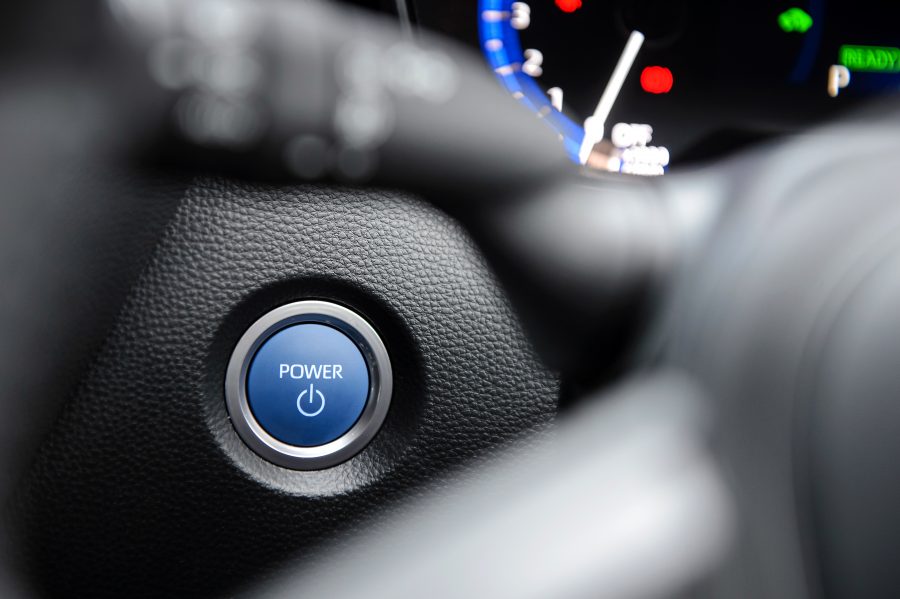
To recap, Toyota hybrids generally contain two batteries: a 12-volt battery (which powers systems such as the headlamps and audio) and a high-voltage hybrid system battery (which supplies the power to start the combustion engine and drive the electric motors).
The simplest way to maintain charge in both of these batteries is to simply go through the normal start procedure: press the ‘Start’ button with your foot on the brake and ensure the ‘Ready’ light is illuminated on the dashboard (you don’t have to keep your foot on the brake thereafter, but ensure your vehicle’s transmission is in ‘Park’ and the parking brake is engaged).
We recommend you put the car in ‘Ready’ mode for about 60 minutes before switching it off again and repeat the process at least once a week, providing you can carry out this procedure while adhering to the government’s advice regarding social distancing and Coronavirus (Covid-19). Please do not leave your car unattended when it is in ‘Ready’ mode.
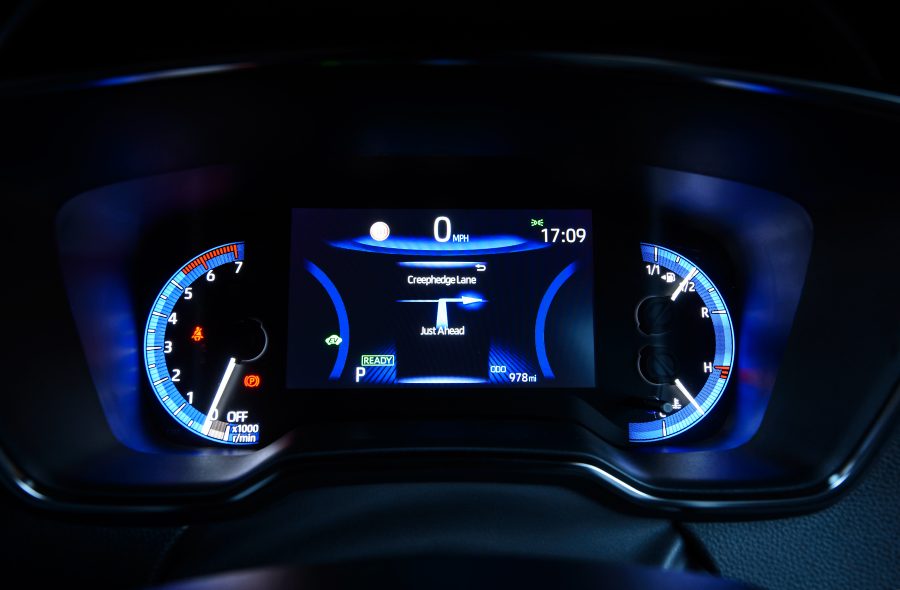
During the time that that car is in ‘Ready’ mode, you may hear and feel the internal combustion engine kick in; this is a normal part of the self-charging process. You might be tempted to switch on the radio to pass the time, or turn on other systems, but bear in mind these will consume small amounts of electrical power so it is preferable to leave them off.
Ensure the handbrake is on; there’s no need to go for a drive, although we must stress that this procedure should take place in a well-ventilated area – something to consider if you park your vehicle in a garage.
What if my Toyota isn’t a hybrid?
Our petrol and diesel cars only have a 12-volt battery, which provides the power to start the engine in addition to the other systems mentioned above. Regular start-up of the vehicle on conventional petrol and diesel engines needs approximately 20 minutes of running to put back into the battery what you remove on start up, so to maintain this battery we would suggest 60 minutes of running at least once a week.
Is there anything else I need to do?
Whether you own a hybrid or a Toyota equipped solely with an internal combustion engine, there are a few other easy car maintenance points that can ensure your Toyota hybrid remains healthy and happy during an enforced hibernation. Again, please adhere to the latest government advice regarding social distancing.
- Check the tyre pressures are fully inflated to the recommended level and top-up if necessary. It can be a good idea to repeat this process when you first drive your car after a long period of inactivity.
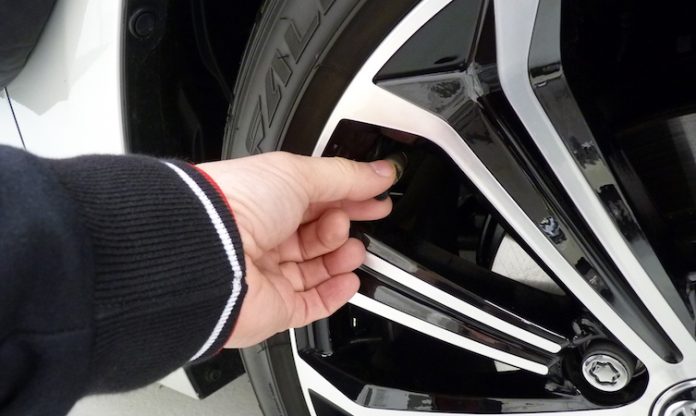
- Clean the car thoroughly inside and out. If you are storing your car in a garage, make sure the vehicle is completely dry before you put it away.
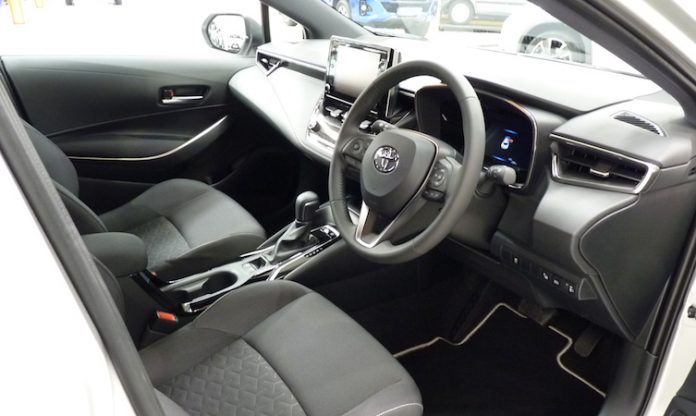
- If you do plan to store your car in a garage, ensure the chosen storage area offers plenty of ventilation. If the space is secure, you could consider opening one of the car’s windows a small way to ventilate the interior. If you do this, you might have to change your car alarm’s setting to prevent it setting off the intrusion sensor – please consult your car’s manual for more information.

- It can be beneficial to leave the vehicle with the parking brake disengaged to prevent the brakes from binding, but only do this if you are certain the car is on level terrain and isn’t going to move. Ensure the transmission is set to ‘P’ for park and place wedges or chocks, if you have them, under the wheels.
- If you have a 12V battery trickle charger, or a solar panel charger, and are confident using them, then these are a good option to keep the battery fully charged while the vehicle is stationary for a period of time.
- If your vehicle is equipped with smart entry and start but the system isn’t operated for a long time, a battery-saving function will automatically be activated to prevent the electronic key battery and the 12-volt battery from being discharged. Battery depletion in the key is minimised by stopping the electronic key from receiving radio waves. On many models equipped with this system, it is possible to manually put the key into battery-saving mode, so please consult your car’s handbook for more information. If you aren’t planning to drive your car for a long time, consider putting the smart key in a safe place and not carrying it around with you in your pocket. This will prevent the car from ‘waking up’ unnecessarily should you happen to walk near it in your garage or driveway.
- If the vehicle will be kept on private property (such as inside a garage) for the duration of its storage, you could consider applying for a Statutory Off Road Notification (SORN). This informs the DVLA that the car is off the road and you will receive a refund of any remaining full months of tax. However, you won’t be able to drive your car legally until you tax it again, so it is only advisable if you are positive you won’t use your car for a long time. You can read more information about how to SORN your car here.
Read more Toyota GB’s latest statement on the Coronavirus (Covid-19) situation
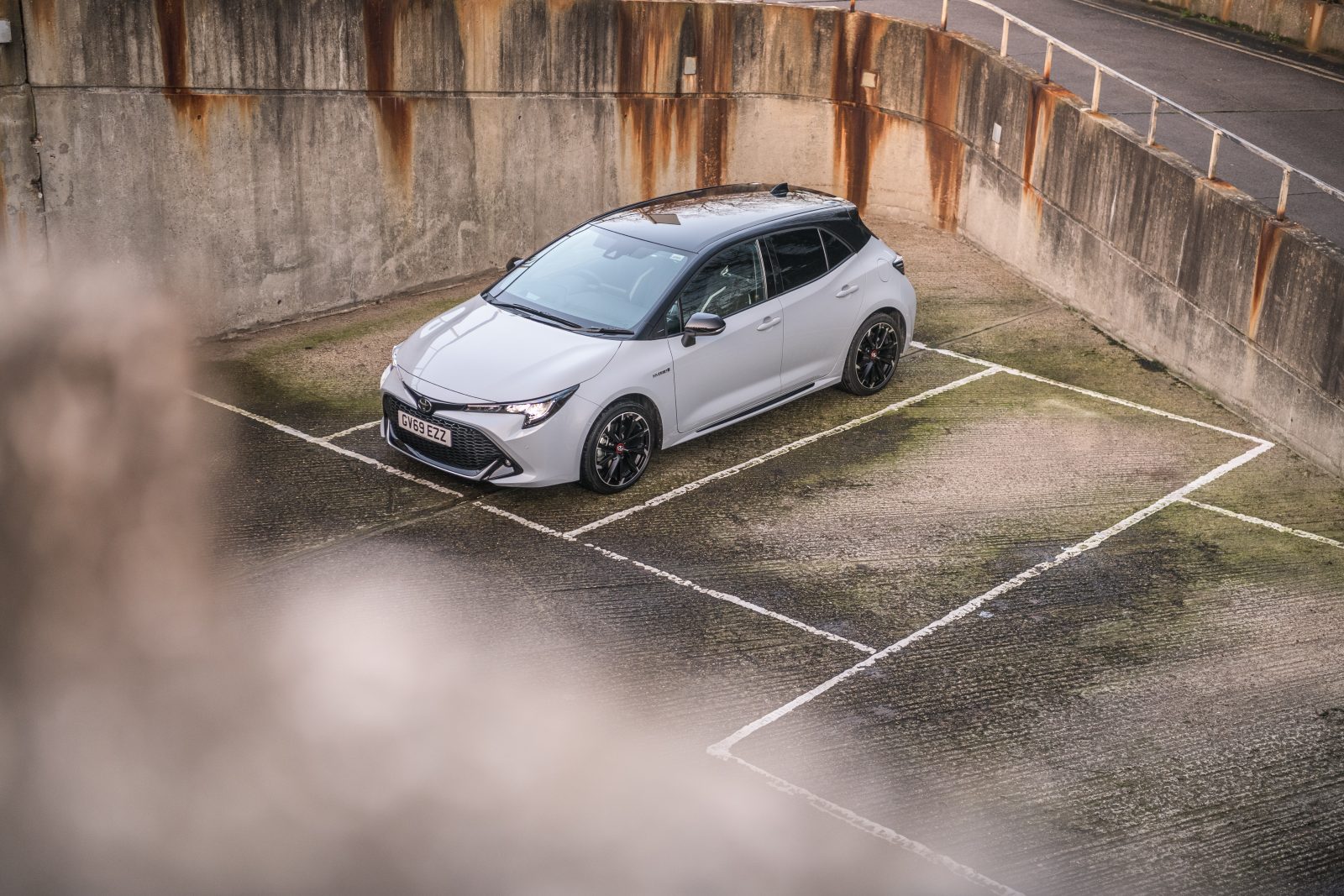
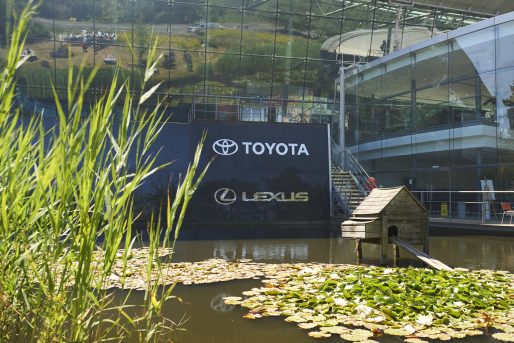
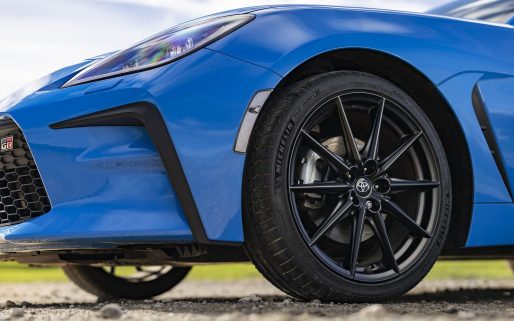

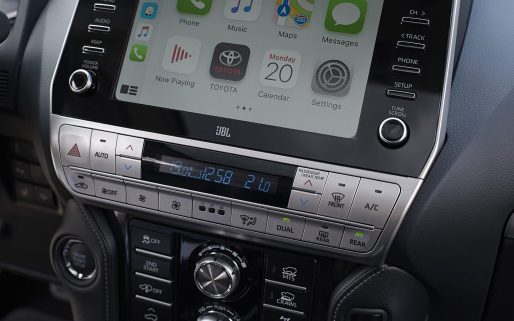
Well i have started having this issue on my 3 year old Yaris Hybrid, AA have been out to jump my car 4 times in the last month and Toyota said the battery was healthy when it went in last month.
I am very angry that i have forked out 20k on a car that cant hold its charge for 3 days.
I thought i was alone, but looking at all these comments, i think Toyota have got some explaining to do. I feel a huge recall coming on.
Hi John,
Thanks for your comment.
Fundamentally, our commitment to all our customers is the 5-year warranty. If the reason you have been unable to start your car is the direct result of a manufacturing defect, then we’ll do all we can to put things right. Included in that promise is the 12v battery, and if it’s reported to us as being faulty by a Toyota centre, we’ll put things right, no question. If it’s a result of lack of use, then we will not be able to support you further.
Journeys that are fewer and shorter in length, as we are currently being encouraged to make by the lockdown restrictions, do not give the 12 volt battery enough time to recharge. This is the same with any combustion powertrain, and we’re advised by the AA that they report a significant number of callouts from owners of all brands due to this problem.
However, there are ways to help maintain the health of the 12 volt battery during lockdown.
For Hybrids, it is recommended to place the vehicle into ‘ready’ mode for around 60 minutes each week. This will help to ensure the health of both the Hybrid and the 12v battery. In order to do this, all you need to do is press the ‘start’ button with your foot on the brake and the ‘ready’ light will show on the dashboard. You can then remove your foot but make sure to keep the vehicle in ‘P’ mode with the parking brake engaged. Remember to keep an eye on your vehicle at all times, do not leave it unattended and ensure to adhere to the current COVID-19 guidelines whilst doing so.
Thanks.
Some advice please. I’ve not used my 2019 2L Corolla in 6 days and the car was completely flat when I tried to unlock it today. (First time ever since new.) As the car is kept in the garage and space is very limited, I couldn’t gain access to the boot via the rear door to reach the 12v battery. Obviously, the boot wouldn’t operate without being energised. I tried ringing my local dealership (Steven Eagel Peterborough) but kept being returned to the switchboard! I asked them to put me through to any dealership who could help. I was advised to charge the car via the positive terminal in the fuse box under the bonnet but as I’m not expert, I didn’t want to risk damaging my car by doing something wrong. The smart charger I borrowed wouldn’t work for some reason once connected to the positive terminal and negative to the body. I called out the RAC who used a hand held jump starter (might be called something else) and it allowed me to start the car straight away. When he checked the voltage with his multimeter, it was reading 2.1 V. I asked the technician if I should purchase a trickle charger and leave it the car whilst in the garage but he said that he wouldn’t recommend it. Apparently (so he said) they can damage the hybrid electrics and if I wanted to charge the battery, I’d be best to disconnect the terminals or remove the battery from the car or use a jump starter.
Sorry for the long comment but in summary, can Toyota explain if I can safely use a smart charger to keep the battery charged whilst connected to the car without it damaging the hybrid system (or affecting my warranty) or would I be best to use a jump starter? Running the car every week for 60 mins in ready mode Seems very excessive to me for a modern car. Surely the battery shouldn’t reduce to nearly zero volts after 6 days (25 mile trip last week.) Can you confirm if a smart charger will not damage my car whilst the battery is still connected to the car and will not cause any warranty issues.
Hi Chris,
Thanks for getting in touch.
We have confirmed with our technical team that, if the appropriate trickle/maintenance charger is connected properly to the 12 volt battery, it should not cause any issues with the hybrid system.
They do advise that the individual instructions for the charger should be followed and understood before it is attempted as these vary between type and make. If you are unsure of how to use this, please consult a trained professional.
We would also recommend getting the 12 volt system checked to make sure that it has fully recovered. The battery should also be tested, and this can be done by booking an appointment at your nearest Toyota Centre.
If jump starting your vehicle, you should always refer to your owner’s manual for advice or contact a professional. This is because, if done incorrectly, it can cause vehicle system damage and has personal safety implications.
Thanks.
Hi, I have a 2008 Prius that isn’t being driven much and keeps needing a jump start everytime. The battery health is fine and I have purchased a car trickle charger to charge it. I haven’t been able to find any information about this so I’d like to ask:
– do I have to disconnect the battery from the Prius before connecting the charger?
I don’t want to damage any of the hybrid systems however disconnecting and reconnecting the battery would be very difficult seeing as the tailgate only opens with the battery connected
Thanks
Hi Hassan,
Thanks for getting in touch with us.
Most trickle chargers can be connected straight to the 12 volt battery, but we would always recommend following the specific instructions that came with the charger you purchased.
We do not recommend disconnecting the battery from the vehicle.
Thanks.
Hi, thank you so much for your reply. Is there any specific reason why you do not recommend disconnecting the battery from the 2008 prius?
Hi Hassan,
We do not recommend disconnecting the battery because it is not necessary.
Thanks
I have a chr hybrid 2018, the car was two months old and we went away and left the car for one week, on return the battery was flat. The last two years , on numerous occasions I’ve had to call out recovery to get it started. Every time Toyota say the battery is OK. Currently the car is in Toyota garage and they have finally agreed the battery has a fault ,been there for two weeks waiting for stock of new battery. Is Toyota going to recall these, as I am seriously thinking of buying a new car from a different manufacturer. I need a reliable car which is why I chose Toyota, but spending £30,000, I think I wasted my money.
Hello and thanks for your message.
We’re sorry to hear that you’ve had problems with the battery in your C-HR. There has been an increase in issues with the 12V battery across the automotive industry and this is in correlation with the reduced travel advised during the national lockdown. In order to prevent further problems, we’d recommend discussing the usage of a trickle charger with your local Toyota Centre as this will help to maintain the battery health in the future. As for your suggestion of a recall, this issue is not unique to Toyota nor to the Hybrid system and is rather as a result of a manufacturing defect. Thanks.
I recently bought a 2.5 year old CHR Hybrid. 2 weeks ago it wouldn’t start so I called the AA. They recharged it and then recommended that I drive it for 10 minutes or more to replenish the charge fully, which I duly did. They also advised me to take it into a Toyota dealer. Toyota trickle charged it overnight last week and declared that the battery was good. On Thursday, just a week later the car had to be engaged 5 times before it finally started. I haven’t used it since but I am hoping that it will start later on tonight. I never had this worry with my 19 year old Honda Civic. I could have saved myself £17,000 by just buying another old banger! I am a Which magazine contributor and I bought the Toyota CHR after their research. I too wonder if this was money well spent. I drive the car on a 20 minute journey to work every week day. Am I really expected to drive for a whole hour to replenish the battery?
As with a lot of people on here my battery keeps going flat and I have to jump start my car pretty much every time I want to use it. Given the car is just over a year old I think this is pretty poor and I wasn’t told at the time of purchase that I would need to drive my car every few days to keep the battery charged. If I was then I would not have purchased it. Rather than your advice of putting in ready mode for 60 minutes each week, I was told by my local dealer that I would need to drive it for over an hour each week if I didn’t want it to go flat. So I have to drive a car for no specific reason during lockdown, just going round in circles. It defeats the purpose of owning a hybrid to be more environmentally friendly when Im driving for no need. I feel I have been miss sold and you should make buyers aware of this issue.
Hi James, thanks for your comment.
In the current lockdown situation, people are encouraged to make fewer journeys, and these are often a quick couple of miles to the local supermarket at most. As with any combustion powertrain, this does not give the 12V battery adequate time to recharge and in these colder months, the increased use of heated seats/radio/air conditioning puts additional strain on the vehicle. The AA have confirmed that this is something that they are seeing regularly and that it is not unique to Toyota, nor to Hybrids. A trickle charger is another way of maintaining the charge in the 12V battery and this is something that your local Toyota Centre can provide further information on. Thanks.
Hi,
Please provide your vehicle registration.
Thanks
I purchased my new Yaris last October and the AA have been out twice already. The first time my husband had the radio on for 20 minutes while I did the shopping and the battery died as we were unaware the ignition should have been left on. My car is currently with Toyota for the seat belt recall and also for checking the battery which died again during the snowy week when I couldn’t drive it or even get into the car! Toyota’s response has been the same as given to others above. My concern is that if I go away for a week or leave it parked at the airport I‘ll return every time to a flat battery. I have been driving for 50 years and this is the first time I have had to call out breakdown assistance even when driving old bangers! The new Yaris is a lovely car and I am very happy with it – apart from the very weak battery which is a major problem and I do hope there is a recall. In the meantime I will have to do a long drive every week (and this is a small car intended for local use) to top up the battery and keep the AA’s phone number close to hand. Such a shame. I did expect better from Toyota and feel this will affect future purchases as can hardly recommend the Yaris.
Hi Julia,
Thanks for contacting us. We’re sorry to hear this.
In the current lockdown situation, people are encouraged to make fewer journeys, and these are often a quick couple of miles to the local supermarket at most. As with any combustion powertrain, this does not give the 12v battery adequate time to recharge. In the colder months, the increased use of the car’s heating systems puts additional strain on the vehicle. This is something that is not unique to Toyota. The decreased usage will impact upon all vehicles, including those with regular combustion engines.
It may not have been seen in older vehicles as there is a much higher level of technology in modern cars, all of which place extra strain on the battery.
Your Toyota Centre will be able to check the battery and determine if this is as a direct result of a manufacturing defect. If this is the case, our warranty will cover it. If the resulting fault is due to a lack of use, we will be unable to support you further.
Using a trickle charger can help to maintain the charge in the battery and although this is an optional route, it is easily achieved by connecting the charger straight to the 12V battery and can offer some peace of mind, particularly when a vehicle is left standing for long periods of time.
Thanks.
I have a Corolla GR Sport on order which I chose primarily because of Toyota’s reliability record. Therefore it was alarming to read the comments (re: battery issues). However, there does seem to be an easy and relatively inexpensive way to avoid being stranded with a flat battery in any circumstances. I was looking at a NOCO Boost Sport GB20 500 Amp 12-Volt UltraSafe Portable Lithium Jump Starter on Amazon. It’s small enough to carry in the car and you can jump start without mains electricity or with assistance from another vehicle. Until I started looking I didn’t even realise such a product existed!
Is there any reason why one of these jump starters couldn’t be used on a Toyota hybrid?
Hi Mike,
Whether powered by an internal combustion engine, electricity, or a hybrid of both, modern vehicles, not just Toyota, need electronic systems to deliver numerous functions, safety features and security measures. Some of these systems remain active even when the vehicle is not in use and therefore create a small drain on the limited resource of the auxiliary battery.
Battery drain is rarely an issue when the vehicle in question is driven frequently because the auxiliary battery is recharged through normal use. But when owners are put in a situation where it is not possible to drive their vehicle for a week or more, such as during a long summer holiday or government lockdown, the auxiliary battery can become depleted – to the point where it is unable to power-up the very systems that would normally restore its capacity.
There is no reason why you couldn’t carry and use a jump starter, but we don’t think it will be necessary once life returns to normal in the next few months.
Congratulations on your new car, and we wish you many happy miles.
Thanks.
My wife and I bought a brand-new Yaris in Aug-2019. The dealer did not make us aware of the need to charge the battery for an hour each week – using petrol and polluting the atmosphere!! We have been pleased with the car and use it as a local run-around; our Lexus is MUCH more comfortable and used for long journeys. We recommended the Yaris to friends in Lymington and they bought a new one in late-Dec-2020. They rang today to ask if we have battery problems – their car won’t open!! Having just visited this website I am horrified about what I read. It sounds as though faulty (as per Ford Kuga PHEV) or low capacity batteries are being used. There is reference in the dialogues to using a solar battery trickle charger – but a Search finds no matches. What make(s) / model(s) are recommended please? And, should Toyota have supplied this already fixed to the roof?
Hi Andrew,
Thanks for your comment.
As with any vehicle, the shorter and less frequent journeys that we are being encouraged to do in this lockdown situation mean that the 12 volt battery does not always have enough time to fully recharge. This has been reported as being a national issue for owners of all brands, and is unrelated to the manufacture of the car.
However, our fundamental commitment to all our customers is the 5-year warranty. If the reason your friends have been unable to start your car is the direct result of a manufacturing defect, then we’ll do all we can to put things right. Included in that promise is the 12v battery, and if it’s reported to us as being faulty by a Toyota centre, we’ll put things right, no question. If it’s a result of lack of use, then we will not be able to support you further.
We would recommend making an appointment with the nearest Toyota Centre to have the battery checked.
Regarding the trickle charger, we are unable to recommend a specific brand, and as this fault is unrelated to the car’s manufacture, they are not included with the car.
Thanks.
Well I’ll try and keep this brief. We purchased a 2ltr Corolla for my wife in 2019 added extras and paid £30k+. In the last 6 mths had nothing but problems with the auxiliary battery running flat, the first 12 mths no problem at all. First time had call out the RAC, they jump started the battery and were told that the car needs to be used more or run for 60mins once a month, 2nd time it happened told run the car 60 mins a week, when a called a 3rd time to complain told to run the car for 60mins every 3 days with the air con etc.. Took the car to Steven Eagell Colchester where the car was purchased for them to check along with a click from the rear Brakes, when I collected the car fobbed of again regarding the battery and the brake problem due to not being used. The whole situation is a joke.
When we were purchasing the car the literature did not suggest that this was an issue, as my wife only uses the car for short journeys so only covers about 800 miles a year, had we have been made aware I wouldn’t have purchased the car.
I have purchased many vehicles from Toyota over the years, personal cars and fleet commercials for my business, the other Toyota vehicles I own are not hybrid and have no issues and to be honest if this is the route and attitude I will think twice before any other purchase.
My neighbour who owns a Mazda has no issues with his hybrid even when it stands about for 5 weeks, your information suggests that the car is left running for an hour, with someone in attendance who is going to do this, we would all leave it running in the drive which then means when stolen none of us are covered by the policy, who is going to replace the car Toyota.